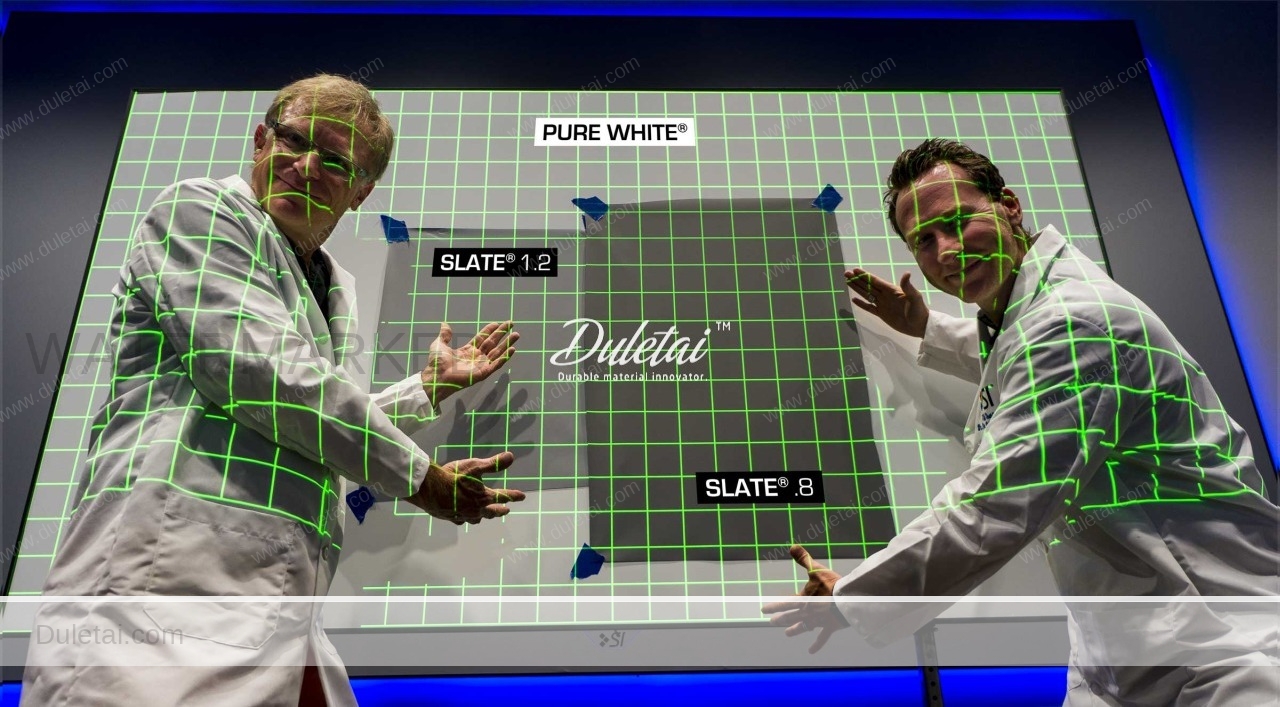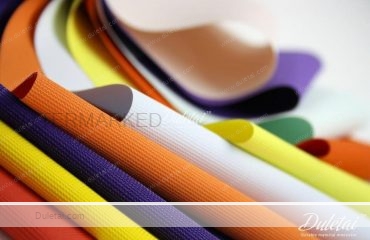Views: 60
Screen gain could cause a projected photo to appear too intense or too dim. It could enable for hot areas that wash out the picture in certain components of the screen, or a restricted viewing angle that gives a top quality view from only certain seats in the space.
Listed below, we will certainly evaluate the technical meaning of screen gain carefully, check out exactly how it affects the watching experience in various settings, and consider the gain degrees of different screen materials. After that, we will talk about the process of selecting as well as purchasing a display to ideal meet the buyer’s seeing demands as well as places to do so, such as eBay.

Just what is Display Gain?
Screen gain is the noticeable increase or decrease in photo brightness created by the material utilized for a forecast display. It is gauged as the ratio in between the change in brightness on a specific display as well as the standard, neutral recommendation screen.
The recommendation display is defined as a display that shows pictures at the very same brightness as a board coated with magnesium carbonate, the brilliant white chalk utilized by gymnasts and also rock climbers to dry their hands. This screen has, necessarily, a gain of 1.0 and also is the referral against which all various other displays are compared.
Reduced Gain
A screen which shows pictures less brilliantly compared to the referral display is claimed to have low gain. Its gain will certainly be related to a number much less compared to 1.0, such as 0.6 or 0.8. A display with a gain of 0.6 will be 60 percent as intense as the recommendation display.
High Gain
A screen which reveals images more vibrantly compared to the recommendation screen is claimed to have high gain. Its gain will certainly be understood a number greater compared to 1.0, such as 1.4 or 2.0. A display with a gain of 2.0 will certainly be twice as brilliant as the referral screen.
Is More vibrant Always Better?
Many individuals promptly presume that a brighter, high gain picture will certainly stand for better image top quality. This is not necessarily real for numerous reasons.
How Does Screen Gain Affect Image Top quality?
High gain screens show brighter photos but the photo high quality goes down substantially as you move far from a center-screen sight. That is to state, they have a minimal seeing angle. They could also be vulnerable to locations which are locations that show up brighter compared to the remainder of the screen.
Reduced gain displays show photos with much less illumination, which can be preferable in a room with less ambient lighting. For technical factors, the lower reflectivity additionally enables for a larger watching angle.
These vital distinctions are summarized in the table below.
Issue to Consider |
High Gain Screen |
Low Gain Screen |
|---|---|---|
Hot Spots |
More likely near center of screen. | Not likely. |
Color Shifting |
Shifts in red, green, and blue may distort images since high gain screens do not reflect all colors equally. | Color shifting not likely. |
Viewing Angle |
Narrower angle of quality image. Viewers need to be more directly in front of screen. Fewer seats will see the image as projected. | Wider angle of quality image. Viewers may be seated in a wider arc around the screen. More seats will see the image as projected. |
Ambient Light |
Compensates for higher ambient lighting in settings such as classrooms, trade shows, and conference centers. | Works well in lower ambient light settings, such as home theaters. |
In enhancement to display gain, two added scores are to be taken into consideration in assessing forecast displays:
Height Gain: Describes a display’s gain score at facility front, the brightest position.
Fifty percent Gain Watching Angle: The angle where brightness goes down 50 percent.
Commonly, a low gain display has a greater fifty percent gain watching angle, which indicates that a larger group of individuals will see the exact same view. High gain screens have lower fifty percent gain viewing angles.
All thought about, a lower gain display can be an outstanding option in a house viewing atmosphere. Screens with gain over 1.3 are not typically advised for home cinemas, but become beneficial for profession programs, classrooms, and conference centers.
Residence sports customers will certainly wish to pick displays at the greater end of the home viewing limit. No person wishes to see the Super Bowl at night.
Just how Do Different Display Materials Affect Screen Gain?
Various products influence display gain and also offer different benefits in relationship to different front- or back- estimate systems that may be selected.
Front Projection Screens
Several products are typical for front forecast displays. These come under three broad categories:
Retro-reflective, just like the reflective material utilized in traffic signs.
Angular reflective, causes light to jump off at an angle like a ping-pong sphere.
Illuminative, which show a diffuse light.
The impact of these numerous products on display gain and also various other display properties is kept in mind below.
Along with display gain, two extra ratings are to be taken into consideration in analyzing forecast screens:
Peak Gain: Describes a display’s gain ranking at center front, the brightest placement.
Half Gain Viewing Angle: The angle where brightness goes down HALF.
Generally, a reduced gain screen has a higher half gain watching angle, which suggests that a larger team of people will certainly see the exact same view. High gain displays have reduced half gain checking out angles.
All taken into consideration, a reduced gain display could be a superb choice in a house seeing environment. Displays with gain over 1.3 are not typically recommended for home movie theaters, yet become valuable for trade convention, classrooms, and also meeting centers.
Home sporting activities visitors will naturally desire to choose displays at the higher end of the house seeing limitation. Nobody desires to see the Super Dish in the dark.
Exactly how Do Various Screen Materials Affect Display Gain?
Various materials affect screen gain and also offer various advantages in regard to various front- or back- forecast systems that may be picked.
Front Forecast Screens
Several materials prevail for front projection screens. These fall under 3 broad categories:
Retro-reflective, just like the reflective product made use of in web traffic signs.
Angular reflective, triggers light to jump off at an angle like a ping-pong ball.
Illuminative, which reflect a diffuse light.
The effect of these numerous materials on display gain as well as various other display buildings is noted below.
Description |
Category |
Detail |
Screen Gain |
|---|---|---|---|
Standard White Matte Screen |
Illuminative | When choosing lower-cost motorized screens,, this is your primary option. | 1.0 |
Light Gray Matte Screen |
Illuminative | Some people think this enhances contrast and improves black levels. Others find duller whites problematic. Good with LCD – powered home projectors and often preferable withLCOS projectors.. | 0.7-1.1 |
High Contrast White Screen |
Angular | Good with DLP home projectors.. | 1.1-1.5 |
High Gain without High Contrast |
Angular | Good for rooms with higher ambient light. Base colors include white, gray, and have included pink. | 1.3-2.0 |
Glass-Bead Screen |
Retro- Reflective |
A form of retro-reflective emulsion, these screens have a rougher surface. | 2.5 |
Retro-Reflective Emulsions |
Retro- Reflective |
At the lower end, good for rooms with higher ambient light. At the higher end, extremely bright. Image artifacts become noticeable. | 2.8-9.0 |
The range of screen materials available for front projection is extensive. When deciding which is appropriate, issues to consider in addition to screen gain would include whether the screen is a permanent or motorized installation, if it is to be installed flat or with a curve, and several other factors that can affect both the functional screen gain and the viewing angle.
Rear Projection Screens
Rear projection screens may be simple screens designed to allow the projector’s light to pass through or diffuse. Others are considerably more complex technologically, employing elaborate arrays of miniscule lenses, often in combination with technologies designed to increase contrast or light diffusion. Sometimes more than one kind of lens (Fresnel and lenticular) is employed in a single screen.
Description |
Detail |
Screen Gain |
|---|---|---|
Rigid Plastic Diffusion |
Varying tints and optical characteristics are added to meet the requirements of the space where the screen will be installed. | 1.0-2.3 |
Flexible Plastic Diffusion |
These flexible screens are offered in varying tints and optical characteristics to meet the requirements of the space where the screen will be installed. | 1.0-1.8 |
Fresnel Lens with Diffusion |
Low gain, wide angle. | Varies based on diffusion coating |
Fresnel Lens with Lenticular |
Fresnel lens screens with lenticular elements are high gain. | 3.0-3.5 |
Fresnel Lens with Lenticular and High Contrast Layer |
Fresnel lens screens with lenticular elements and a high contrast layer are considered medium gain, high contrast. | 4.0 |
A wide variety of display types are offered for those who use back forecast systems, using a variety of gain levels ideal to various area setups.
Is Display Gain Different for Back Estimate?
The definition of display gain is essentially the same whether front or rear estimate is being considered. The technologies for generating the screens are different, however display gain still refers to the difference between the referral board and the light at the facility front of the screen.
Maintain Projector in Mind When Choosing a Display
Screen gain is just one factor in the regarded brightness of a viewed image. Projector illumination will likewise affect image brightness. So for a low-light home setting, a really brilliant projector could need a specifically low-gain display in settlement. A projector with a reduced light might need a higher-gain display. Conversely, if the projector to be utilized in a classroom setting did not have a brilliant light, then a teacher could want an especially high-gain display.
Exactly how to Buy Projection Screens
Locating the best projection screen is primarily an issue of deciding just what you are trying to find. Depending on the illumination and configuration of your room, you could want a display with a particularly broad viewing angle, that is to state reduced gain. Suppliers normally price displays not only for display gain, however additionally the watching angle and also the half gain viewing angle, which is the angle at which brightness is decreased by fifty percent. This is beneficial in determining in an extra functional sense just how large a viewing angle a particular screen actually provides.
Depending upon your very own level of confidence in intending a residence theater task, you might wish to speak with a professional making certain you have actually covered all the bases. Front- as well as rear-projection screens could be bought from specialty businesses that intend and install residence movie theaters, from big electronics shops, from discount stores, as well as from various on-line electrical outlets, consisting of eBay.
The best ways to Store for Forecast Screens on eBay.
Finding the appropriate forecast screen on ebay.com is mostly an issue of determining just what you are trying to find. There are constantly an excellent many outstanding screens readily available, so you might intend to do some surfing simply to arrange with your concerns.
When you’re looking for projection displays on eBay, you could begin by picking estimate screens,, which are found within the TV, Video & Residence Audio as well as Service & Industrial areas, to obtain a sense of the options. The choice is really substantial, so if you have actually currently identified producers you favor, you could restrict your selections by manufacturers.
Compare Costs
You will certainly wish to figure the expense of shipping right into the last price of your display, and also eBay offers a rate sorting option that allows you to do that. Sorting by cost additionally aids you to compare costs between sellers. Dramatically different rates in some cases represent bargains however sometimes stand for items that are not exactly what they seem to be.
Have a look at the Sellers
You may prefer to make your initial selection just from suppliers who take returns. Still, return plans vary and also each supplier define their return plan details on their product pages.
It is also important to feel comfy that you are taking care of a reliable vendor. On ebay.com, two means to confirm that a vendor is reliable is to examine the responses left by prior consumers and also to opt to buy from leading ranked vendors. These are vendors that have actually shown, over lots of purchases, that they give the leading levels of dependability as well as customer support.
Conclusion
The appropriate general photo brightness for a particular house or service viewing setting will certainly be determined as a whole by the illumination of the viewing atmosphere and the demand for pictures to be noticeable throughout a broad or slim checking out angle.
Screen gain, in addition to projector brightness, will certainly together identify just how intense the projected picture appears. Figures that aid the customer understand how vast a seeing angle gets a regular image and also at which angle the picture loses half its illumination (fifty percent gain watching angle) assist in knowing exactly how wide an area could efficiently appreciate the watching experience.
To purchase a residence or organisation projection screen that will show well on you, it is essential to take screen gain into consideration. This will certainly permit you to pick the display that provides you and your visitors the most comfortable and also appealing viewing experience.

